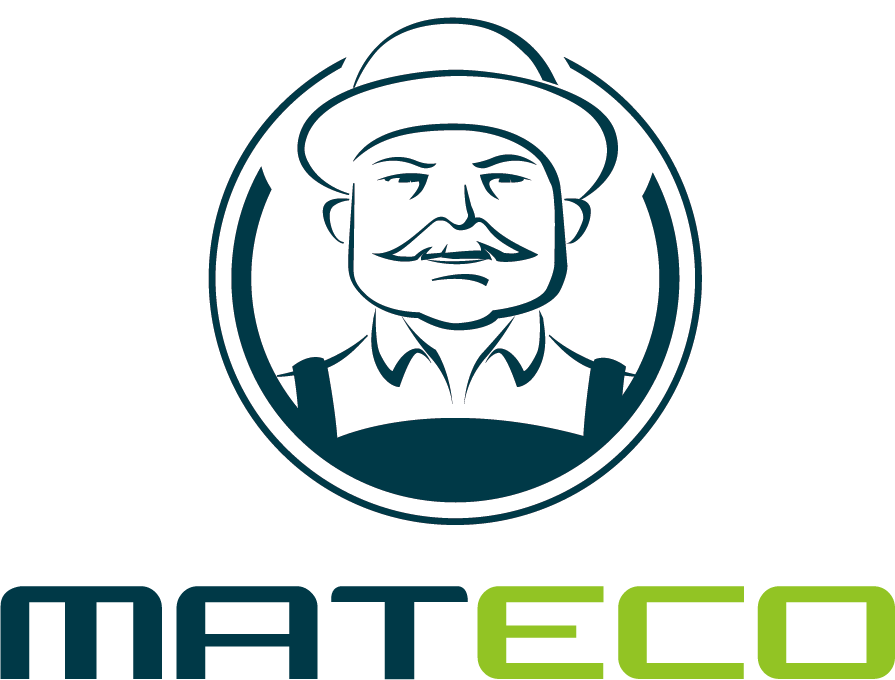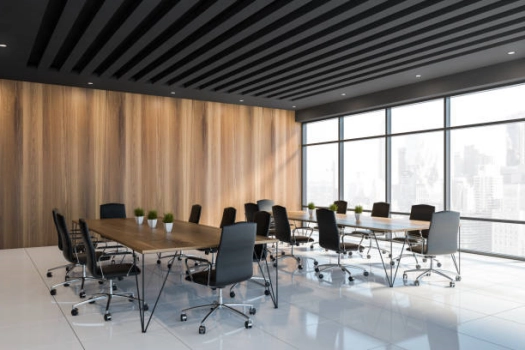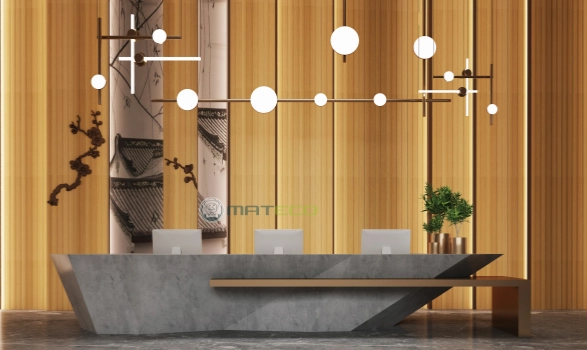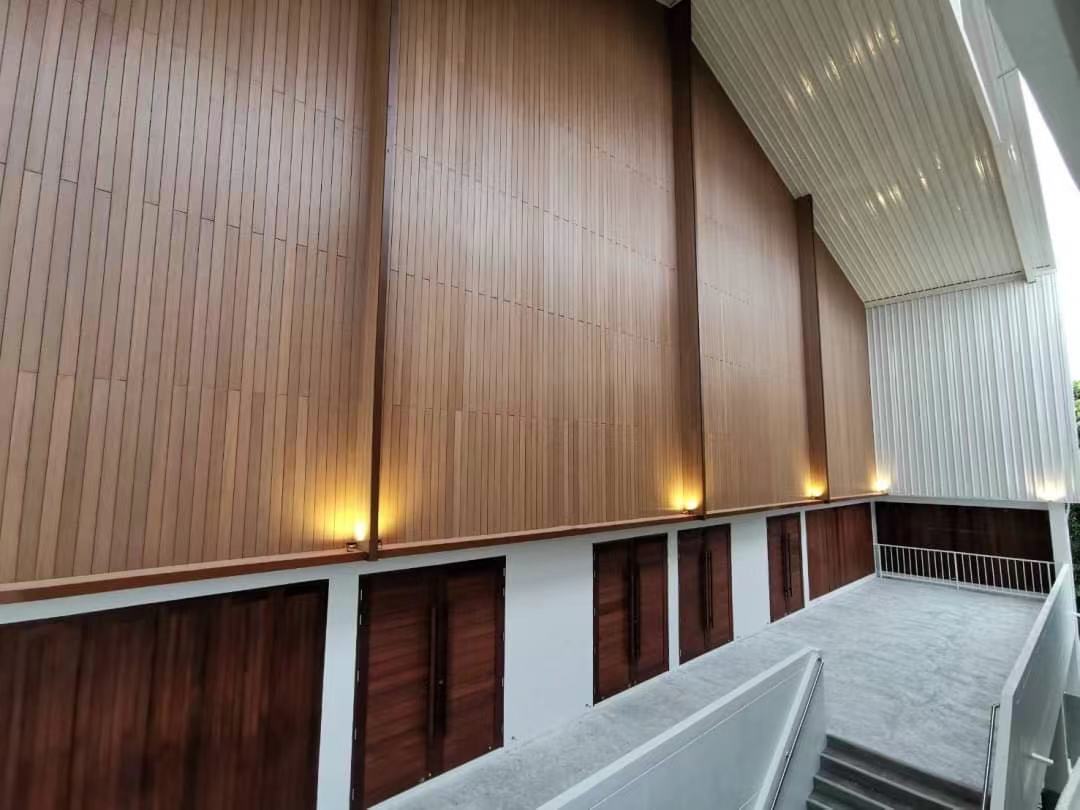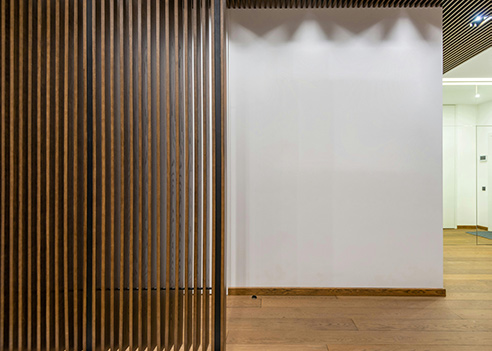WPC Louvers VS Traditional Materials
Louvers are essential architectural elements used for shading, privacy, ventilation, and aesthetic enhancement in both residential and commercial buildings. While they can be crafted from various materials, WPC louvers have gained popularity for their unique features. Let’s explore how WPC louvers compare to traditional materials like wood and aluminum.
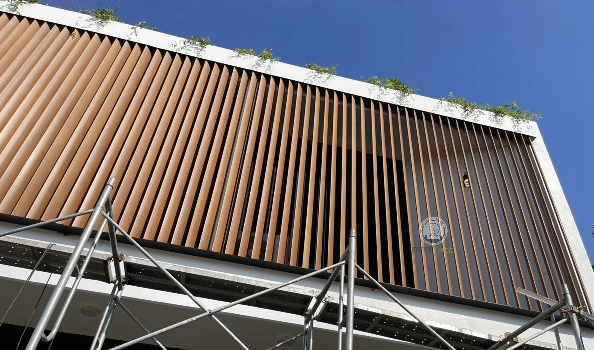
Key Features of Louvers
Shading and Light Control
WPC Louvers: Designed to effectively block sunlight while allowing airflow, WPC louvers maintain comfortable indoor temperatures and reduce glare.
Traditional Materials: Wood and aluminum louvers also provide shading, but wood can warp over time, affecting performance, while aluminum can become hot to the touch in direct sunlight.
Ventilation
WPC Louvers: Their slatted design allows for excellent airflow, promoting natural ventilation without compromising privacy.
Traditional Materials: Both wood and aluminum can facilitate ventilation, but their longevity can be affected by environmental factors, especially in humid climates.
Aesthetic Appeal
WPC Louvers: Available in various colors and finishes, WPC can mimic the look of natural wood while offering modern design flexibility.
Traditional Materials: Wood provides a classic aesthetic, while aluminum offers a sleek, contemporary look. However, wood may require maintenance to preserve its appearance.
Durability
WPC Louvers: Highly resistant to moisture, insects, and rot, WPC louvers can withstand the elements, making them ideal for diverse climates.
Traditional Materials: Wood is vulnerable to decay, and while aluminum is durable, it can corrode without proper treatment.
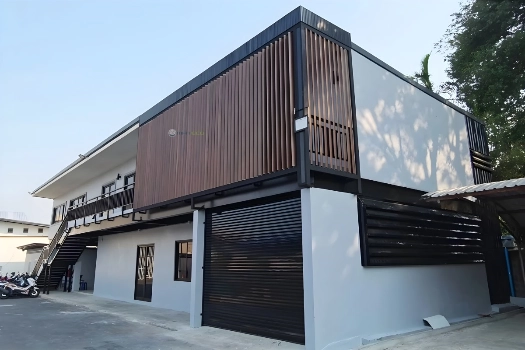
Maintenance
WPC Louvers: Require minimal upkeep; a simple wash with soap and water is usually sufficient to keep them looking great.
Traditional Materials: Wood demands regular maintenance like sealing or painting, and aluminum may require occasional polishing.
Environmental Impact
WPC Louvers: Often made from recycled materials, WPC is an eco-friendly choice that appeals to environmentally conscious consumers.
Traditional Materials: Responsibly sourced wood can be sustainable, but the production of aluminum can have a larger environmental footprint.
Cost Efficiency
WPC Louvers: While initial costs may be higher, their durability and low maintenance needs can lead to long-term savings.
Traditional Materials: Wood may be cheaper upfront but can incur higher maintenance costs over time, while aluminum often has a higher initial price.
Conclusion
WPC louvers offer a combination of functionality, durability, and aesthetic versatility that makes them a smart choice for modern design. Their unique features allow for effective shading, ventilation, and minimal maintenance, making them an ideal alternative to traditional materials. When planning your next project, consider the advantages of WPC louvers for a stylish and practical solution.
If you are looking for a WPC manufacturer, MATECO will be your best choice.
WhatsApp: +86-13380085620
Email: info@matecowpc.com
